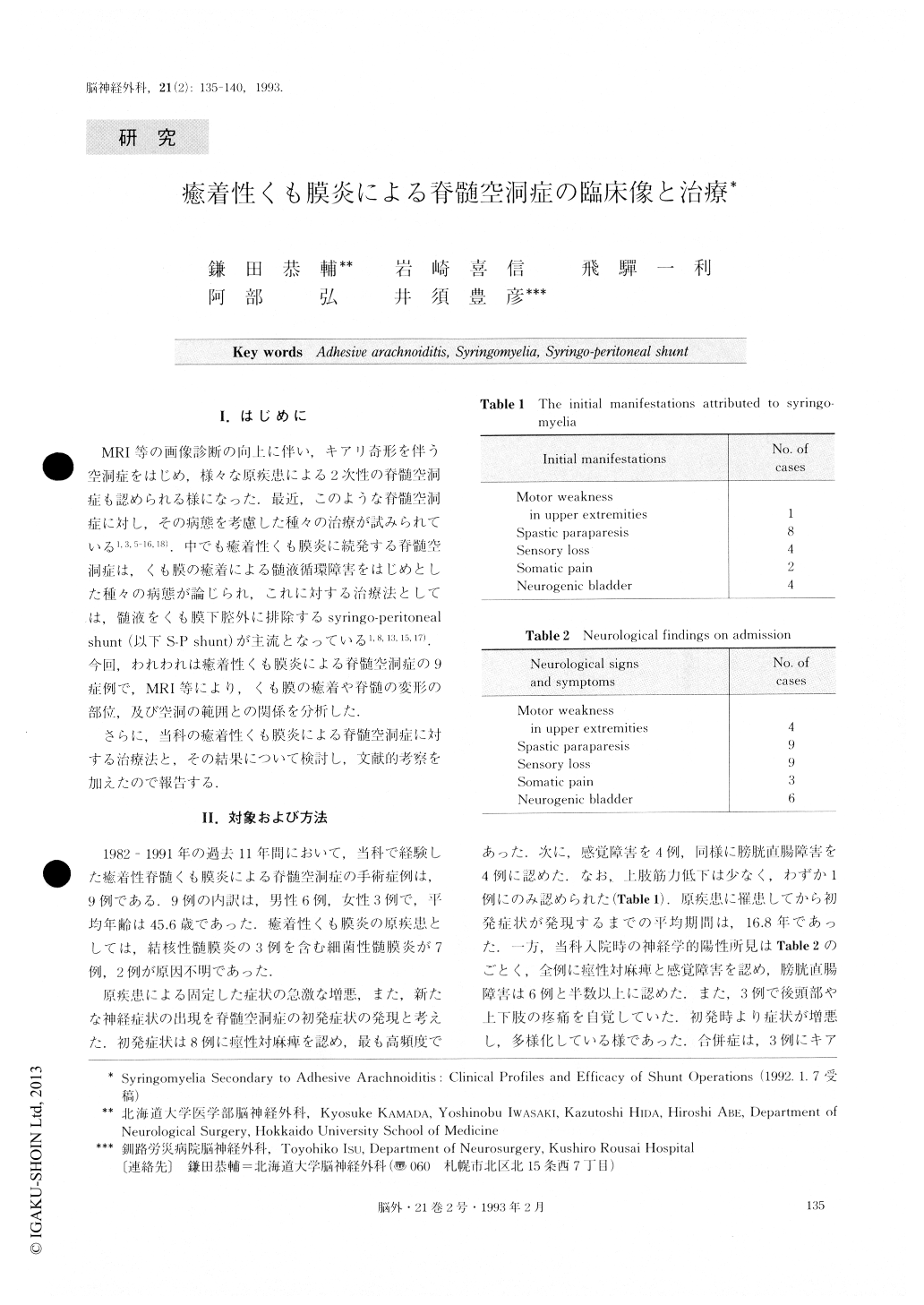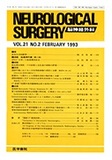Japanese
English
- 有料閲覧
- Abstract 文献概要
- 1ページ目 Look Inside
I.はじめに
MRI等の画像診断の向上に伴い,キアリ奇形を伴う空洞症をはじめ,様々な原疾患による2次性の脊髄空洞症も認められる様になった.最近,このような脊髄空洞症に対し,その病態を考慮した種々の治療が試みられている1,3,5-16,18).中でも癒着性くも膜炎に続発する脊髄空洞症は,くも膜の癒着による髄液循環障害をはじめとした種々の病態が論じられ,これに対する治療法としては,髄液をくも膜下腔外に排除するsyringo-peritonealshunt(以下S-P shunt)が主流となっている1,8,13,15,17)今回.われわれは癒着性くも膜炎による脊髄空洞症の9症例で,MRI等により,くも膜の癒着や脊髄の変形の部位,及び空洞の範囲との関係を分析した.
さらに,当科の癒着性くも膜炎による脊髄空洞症に対する治療法と,その結果について検討し,文献的考察を加えたので報告する.
The authors report nine cases of syringomyelia secondary to adhesive arachnoiditis treated in our insti-tute from 1982 to 1991. Neurological signs, radiological features, and results of surgical treatment were re-viewed. Common initial manifestations in association with syringomyelia were spastic paraparesis in 8 pa-tients (88.9%) , regional sensory loss in 4 (44.4%) , neurogenic bladder in 4 (44.4%) , and somatic pain in 2 (22.2%) . All the neurological symptoms or signs pro-gressed gradually for years.
All the patients were treated with various modes of shunt operations, including syringo-peritoneal shunt in seven patients, syringo-subarachnoid shunt in one, and ventriculo-peritoneal shunt in one, respectively. Three patients who failed to resolve their major complaints af-ter the first surgery further received syringo-peritoneal shunts. Postsurgical follow-up periods ranged from 18 months to 10 years.
Serial MR imaging revealed a significant reduction of the size of syringomyelia in 8 of 9 patients. However only 6 patients showed certain improvement of neurolo-gical deficits. Three patients who failed to improve clearly had a long (beyond 15 years) history of syringo-myelia before the first surgical treatment. A total of 11 syringo-peritoneal shunts were clone in 8 patients of whom 5 patients improved neurologically. It was noticed that 4 of 5 successful syringo-peritoneal shunts were placed in the caudal level of the syrinx. In conclusion, syringo-peritoneal shunt may he at present an optimal mode of surgical management for syringomyelia secondary to adhesive arachnoiclitis. In addition, we would like to recommend that follow-up serial MR imaging be clone for patients having adhesive arachnoiclitis in order to detect syringomyelia as early as possible.

Copyright © 1993, Igaku-Shoin Ltd. All rights reserved.


